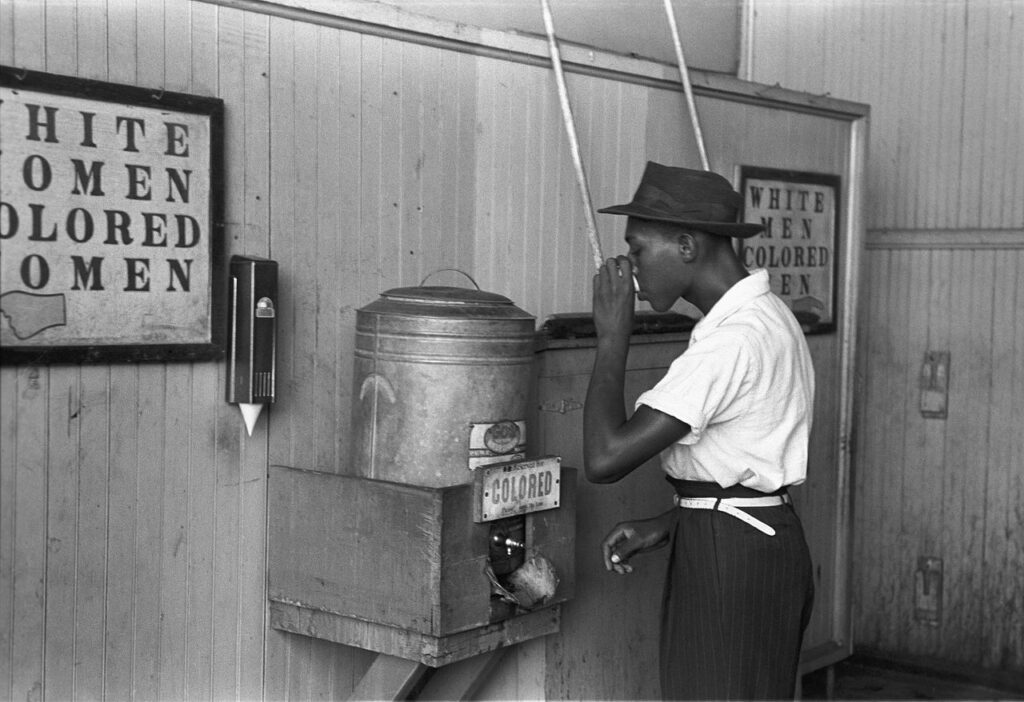Segregated facilities, Oklahoma City, OK, 1939
Lee was hyper aware of the segregatation of the south. He repeatedly photographed it when he en=countered it. Since mostof his 1930s work was done of people laboring, he constantly interacted with Latino and African-American people.
Did his photography get seen.
Director Roy Stryker of the Historic Unit of the FSA hesitated but went ahead with the distribution of images like the oner above.
Fully aware that the funding for the FSA project came from Congress and that nearly a third of the House was segregationist, Stryker exposed himself to being de-platformed by this southern block, which, as the 30s went on, became a running battle leading all the way up to World War II.
Did it get published?
Yes, occasionally and only in the northern and far western press.
It was a beginning, leading the public forward 15 years to the first major Civil Rights Act of 1964.
In a way, Lee, fully aware, was not only shooting “hard times,” but, in his mind, “better times.”

